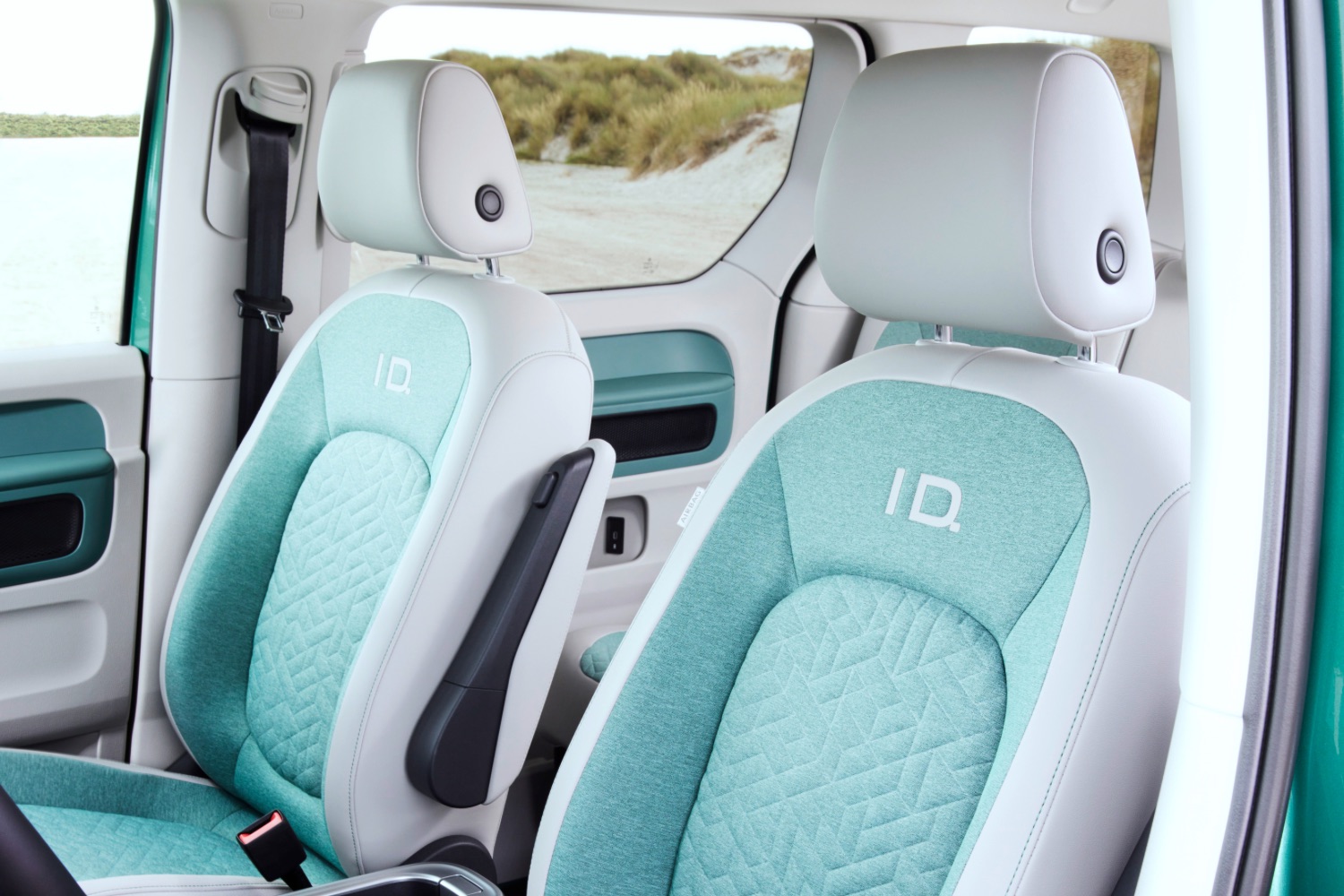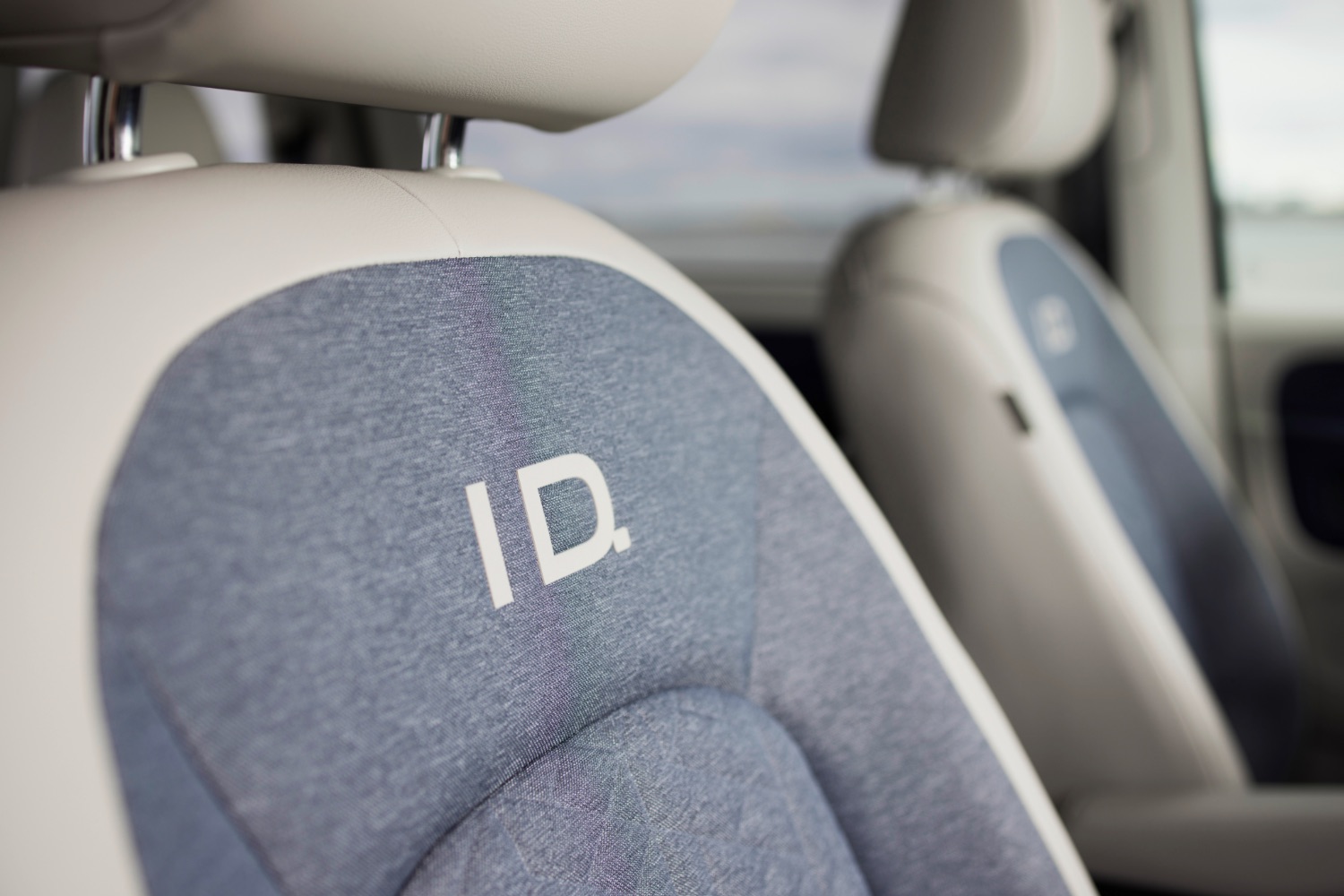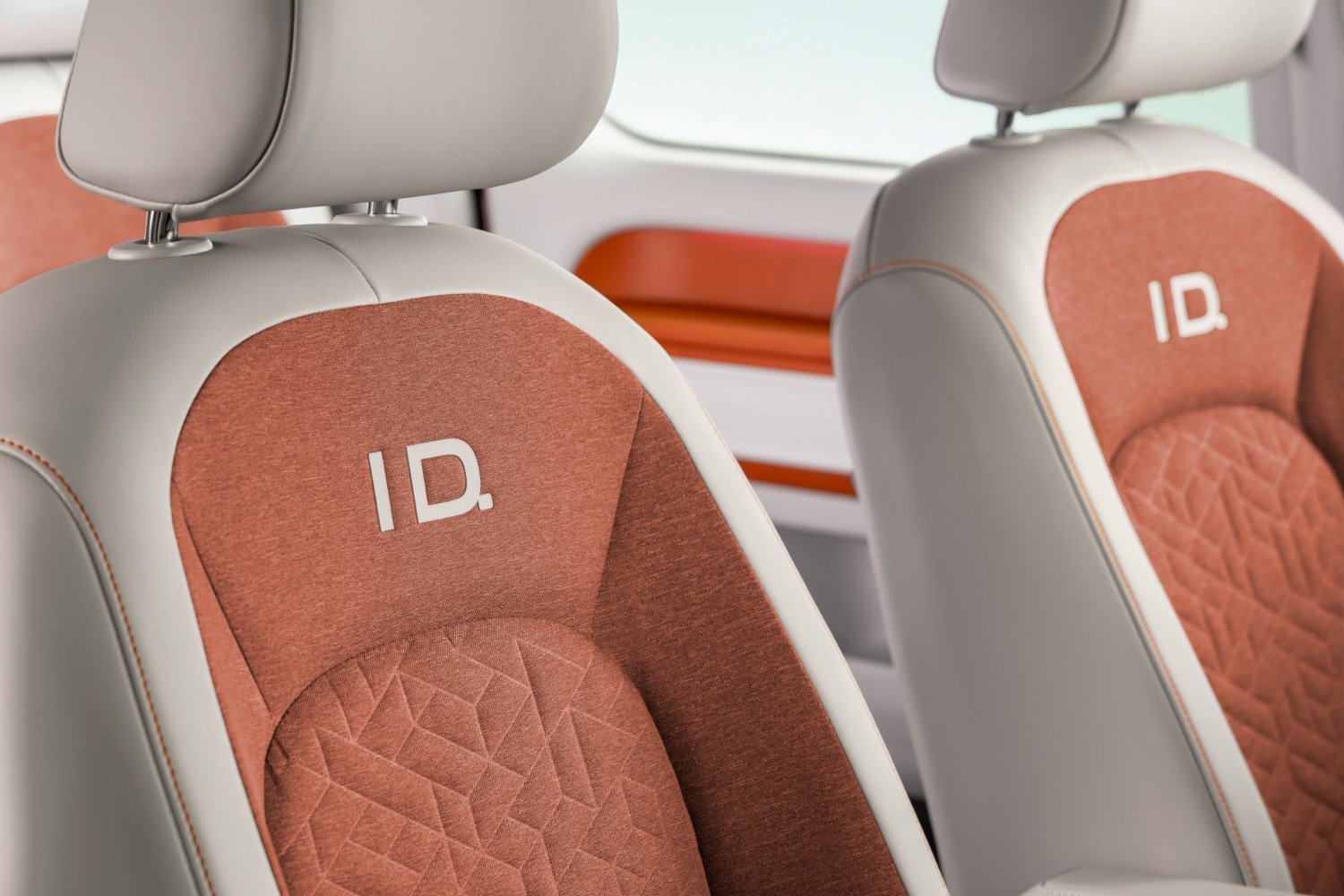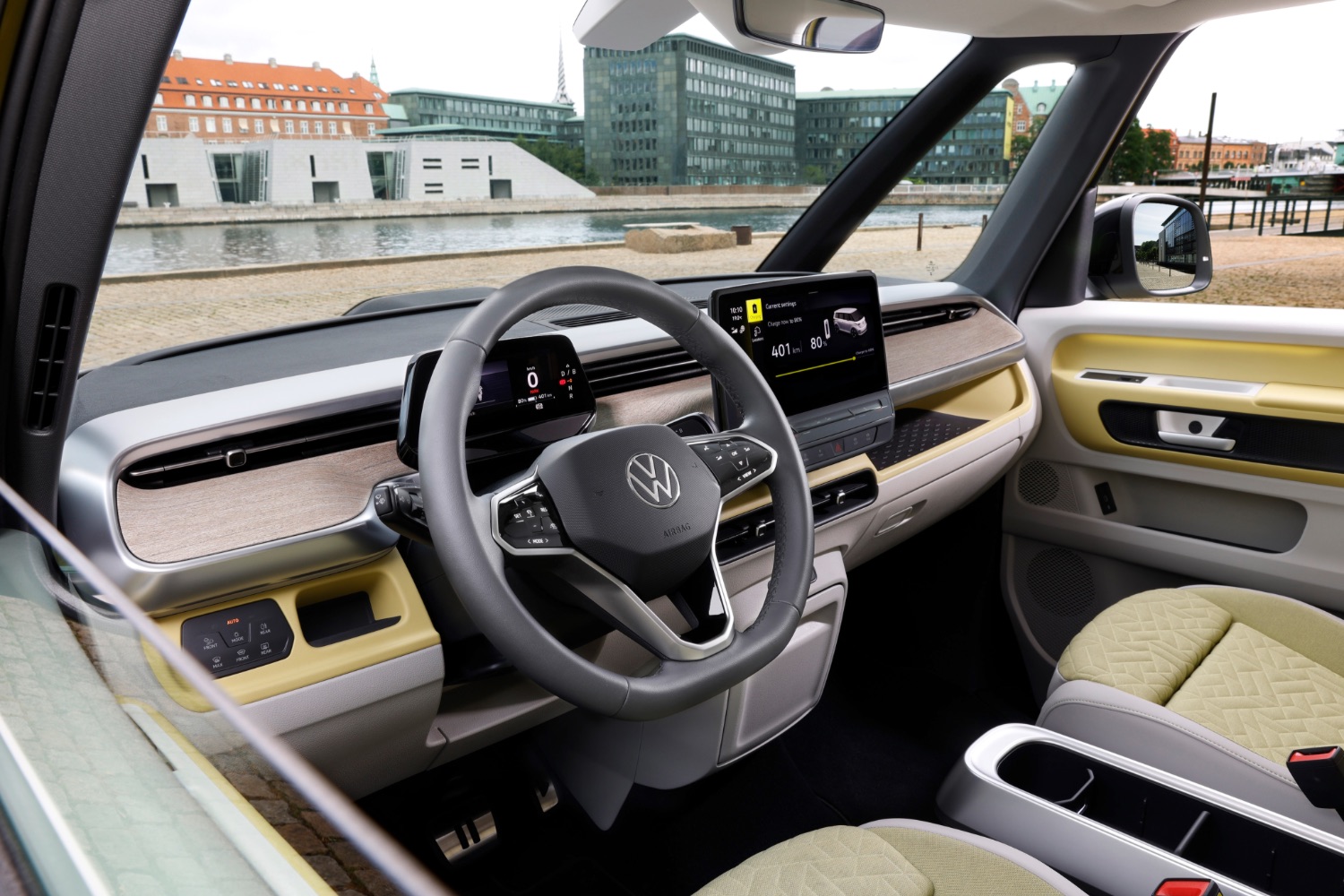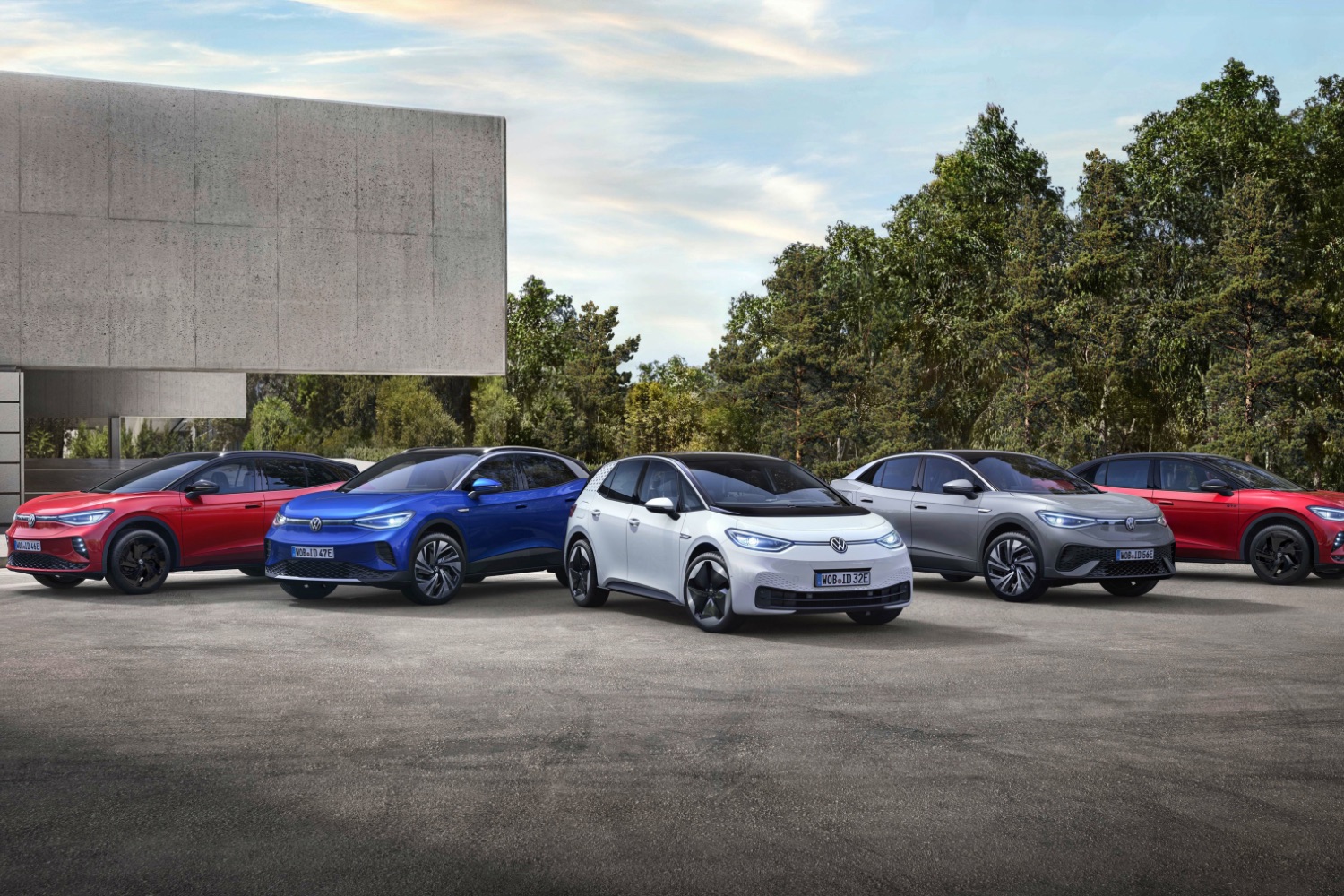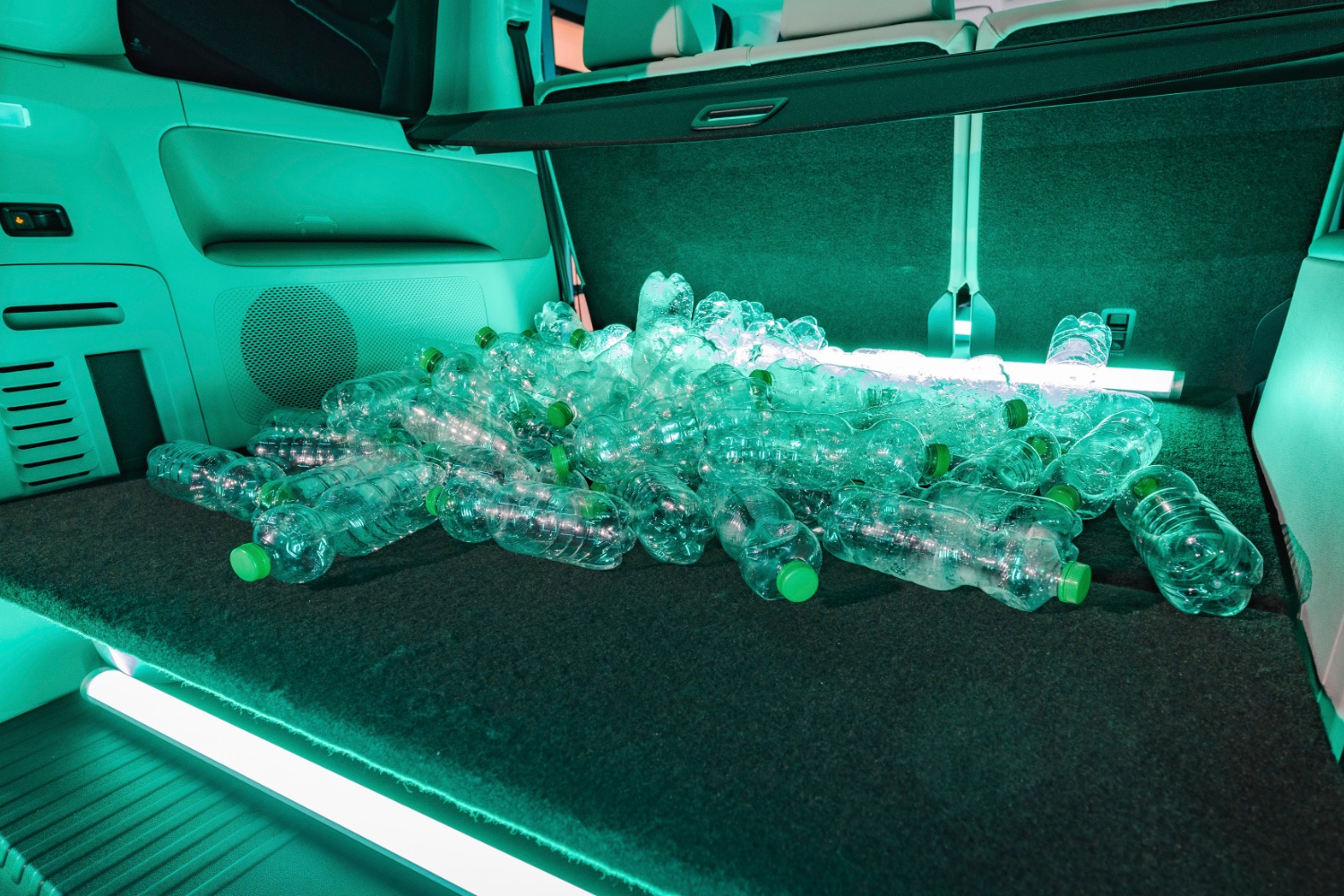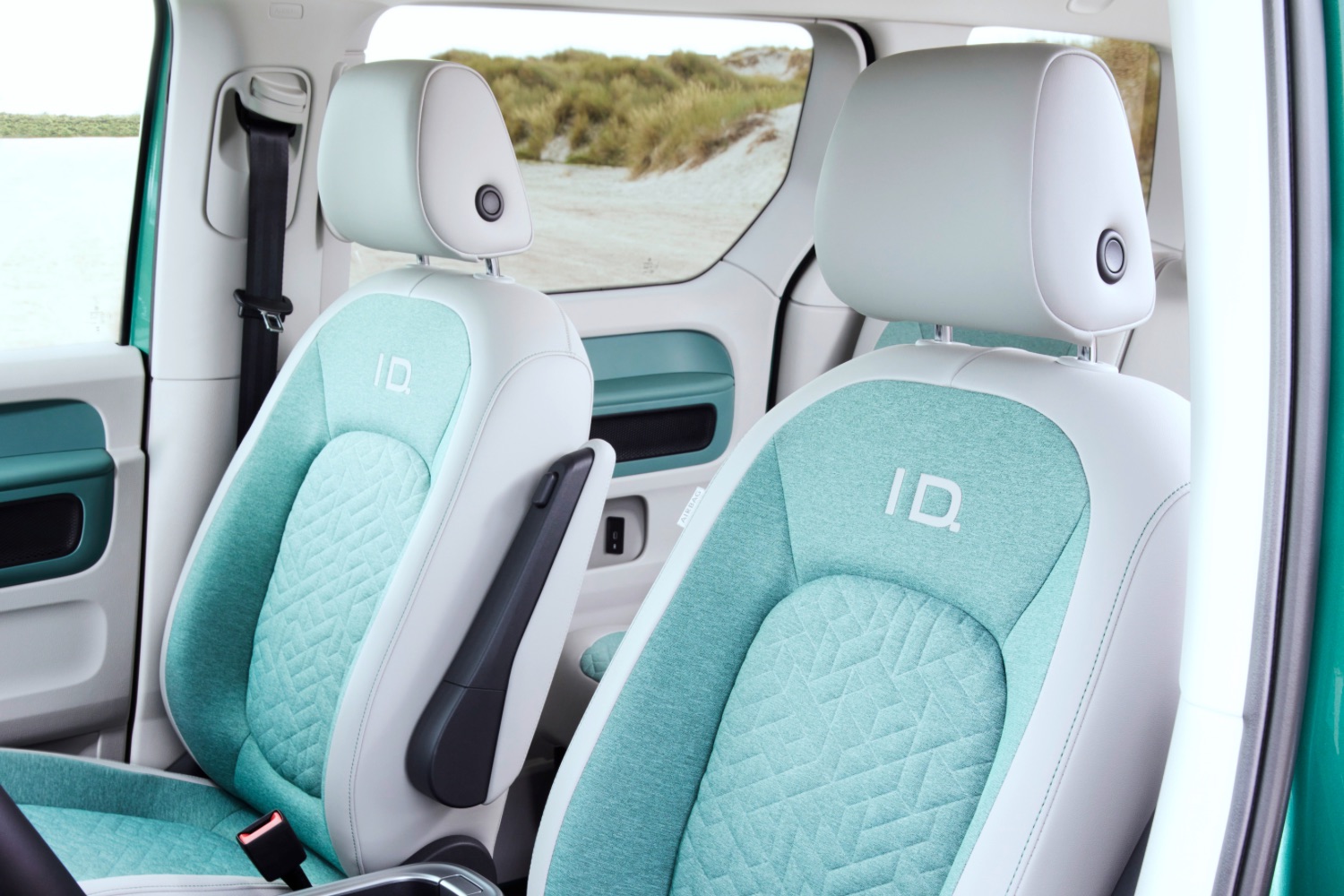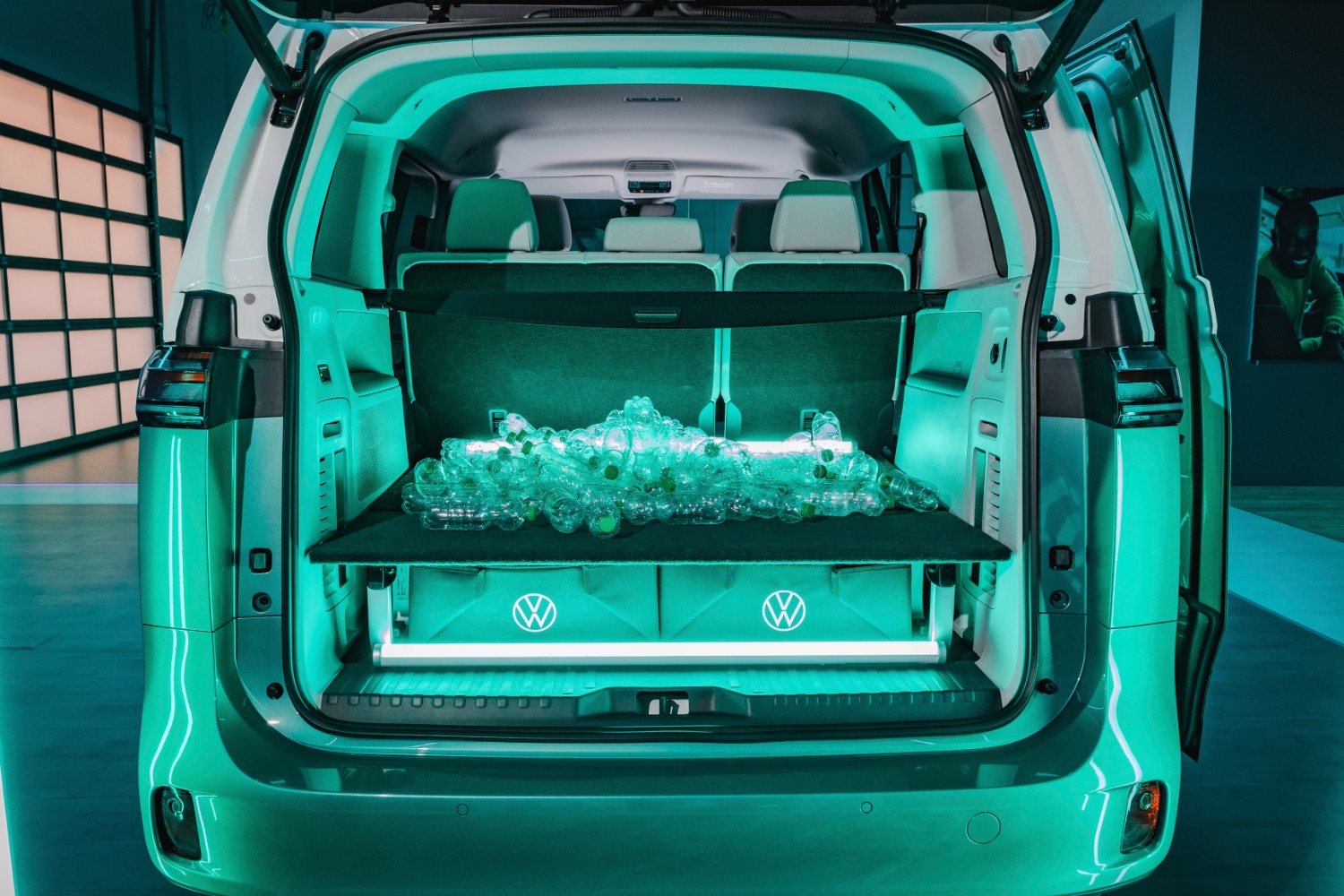Volkswagen has announced that it's going to make its vehicle interiors more sustainable by using more recycled and recyclable materials. The all-electric ID family will be the first cars to benefit from this programme.
Starting with the ID. Buzz
In fact, the ID. Buzz already has, and the eco-friendly materials will be rolled out to the ID.3, ID.4, ID.5 and the upcoming ID.7 saloon in the coming months.
The materials include 'Seaqaul' - yarn made from ten per cent collected marine debris and 90 per cent recycled PES yarn - which can be used for seat fabrics (the ID. Buzz already uses this, and it's in use with other car makers, too, notably Fiat for the 500e). Volkswagen claims that the CO2 emissions from the production of this fabric are almost one-third lower than for conventional seat cover materials.
Improving eco-balance
Silke Bagschik, Head of Product Line E-Mobility, explains: "Through the widespread use of recycled materials and the animal-leather-free interior in our ID. models, we are further improving the eco-balance of our vehicles - with high demands on haptical and long-term quality. The feedback from our customers confirms that we will continue to expand these sustainable approaches in the future."
The ID. Buzz is leading the way with this sort of thing. Alternative materials made of ocean plastic or old PET bottles (to be exact, 63 size-500ml bottles) are already being used for Buzz interior components, while the surfaces of the headliner and floor covering in the Buzz are made completely from recycled polyester. Recycled plastics can also be found in the insulating layer of the carpet. The same applies to components such as the underbody cladding and the wheel housing liners.
No to chrome
Chrome is being ditched, too, as Volkswagen says that the production of the shiny metal plating is harmful to the environment. Instead, the Buzz already gets a liquid paint with a chrome look with a bio-based binder, and other ID models will also get it.
According to Volkswagen, the waste materials that it uses, such as old fishing nets and plastic bottles, are ground up into granular form, which can then be added to newly-made materials as a percentage, or which can go on to make new parts that are manufactured from 100 per cent recycled material. The key, says the German car maker, is to ensure that: "the reused materials must always offer the same characteristics as conventional ones. This applies to both their look and feel as well as to their durability and longevity."
By 2030, Volkswagen aims to cut carbon emissions per vehicle by 40 per cent, and the company plans to have a climate-neutral balance by 2050 at the latest. Part of that plan is to have 'closed material cycles' for all the raw materials used in car making.

